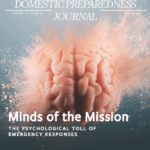Full article by Michael Prasad, an Article Out Loud from Domestic Preparedness, July 17, 2024.
In this feature article, a Certified Emergency Manager lists eight major elements of Community Lifelines using traffic-light-type color-coding to categorize a disaster’s adverse impact status. He applied this same system to the Key Bridge collapse recovery efforts in Baltimore, Maryland.
Listen to expert insights and learn how he applied this information-gathering tool to an ongoing recovery effort.

Michael Prasad
Michael Prasad is a Certified Emergency Manager®, a senior research analyst at Barton Dunant – Emergency Management Training and Consulting, and the executive director of the Center for Emergency Management Intelligence Research. He researches and writes professionally on emergency management policies and procedures from a pracademic perspective. His first book Emergency Management Threats and Hazards: Water was published by CRC Press in September 2024, and his second book Rusty the Emergency Management Cat is now available on Amazon to assist emergency managers in communicating with families to help them alleviate disaster adverse impacts on children. He holds a B.B.A. from Ohio University and an M.A. in emergency and disaster management from American Public University. Views expressed may not necessarily represent the official position of any of these organizations.
- Michael Prasadhttps://www.domesticpreparedness.com/author/michael-prasad
- Michael Prasadhttps://www.domesticpreparedness.com/author/michael-prasad
- Michael Prasadhttps://www.domesticpreparedness.com/author/michael-prasad
- Michael Prasadhttps://www.domesticpreparedness.com/author/michael-prasad








